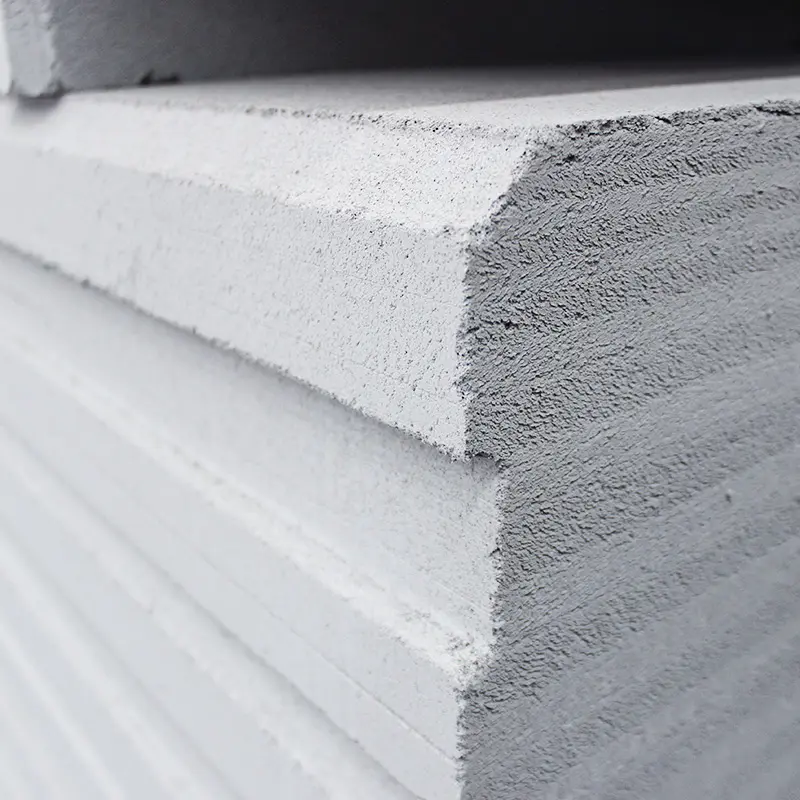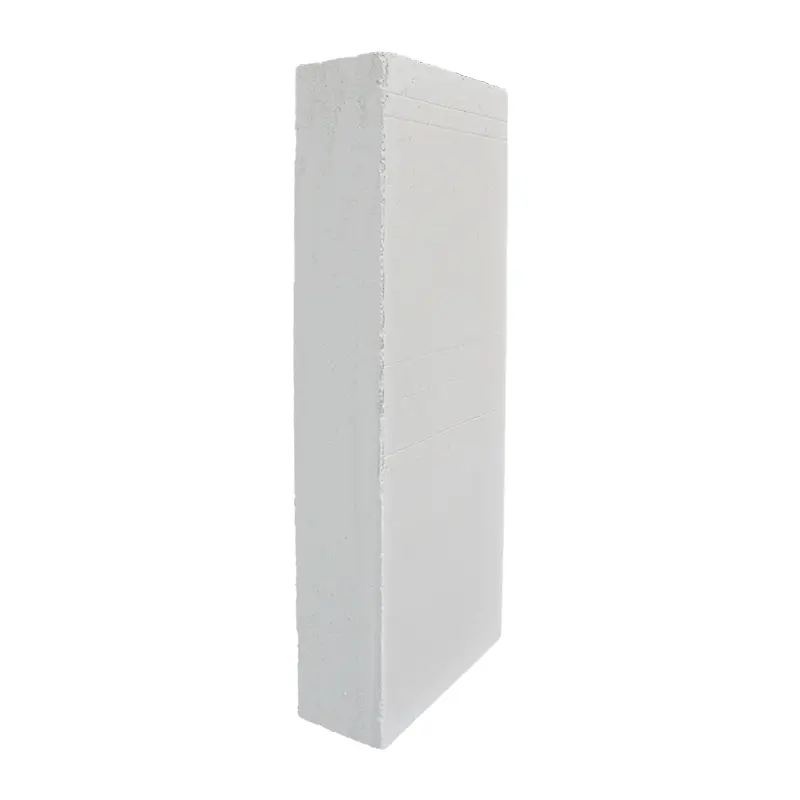Choosing the right building material is critical for any construction project. This article dives deep into the world of AAC blocks (autoclaved aerated concrete), brick, and red brick, comparing their advantages and disadvantages. We’ll explore their unique properties, compressive strength, durability, construction cost, and insulation properties to help you decide whether AAC blocks or brick is the right choice for your next project. Learn why AAC blocks are becoming increasingly popular and how they stack up against traditional materials.
1. What are AAC Blocks?
AAC blocks, also known as autoclaved aerated concrete blocks, are a building material that has gained popularity worldwide. They are a lightweight, precast concrete block that offers excellent insulation properties. The manufacturing process involves mixing cement, lime, sand, and an expanding agent (typically aluminum powder) that causes the mixture to rise like bread dough. This creates tiny air pockets within the concrete block, making it lightweight. After the initial setting, the blocks are cured in autoclaves under high pressure and temperature.
This manufacturing process gives AAC blocks their unique properties. They are known for their excellent thermal insulation properties, making them energy-efficient. These blocks also have good fire resistance and sound absorption capabilities. AAC blocks are often a preferred choice construction material for building construction, especially in areas focused on energy efficiency and sustainable construction and building practices. Furthermore, AAC blocks manufacturers are constantly working to improve the quality and sustainability of their products.
- AAC blocks are lightweight.
- They offer good thermal insulation.
- AAC blocks have excellent fire resistance.
2. What are Traditional Bricks and Red Bricks?
Brick, in its various forms, has been a staple building material for centuries. Traditional red brick is made from clay, which is molded into rectangular shapes and fired in a kiln. This firing process gives red brick its characteristic color and strength. Bricks are one of the oldest materials for building ever used in building construction.
Red bricks are known for their durability and aesthetic appeal. Brick masonry can provide robust structures. However, bricks are made of a heavier building material than AAC blocks. Furthermore, the manufacturing process of traditional red bricks can be more energy-intensive. The weight of bricks can also impact transportation costs and labor requirements during construction and building.
- Red brick is made from clay.
- Bricks are known for their durability.
- Traditional bricks have been widely used for centuries.
3. AAC Blocks vs. Brick: Which Has Better Compressive Strength?
Compressive strength is a crucial factor when considering materials for building. It measures a material’s ability to withstand loads. Generally, AAC blocks and bricks both offer good compressive strength.
However, there are some important differences. The compressive strength of concrete in AAC blocks can vary depending on the mix design and density. High-density AAC blocks can achieve substantial compressive strength, making them suitable for load-bearing walls in certain applications. However, when compared to aac blocks, traditional red brick can sometimes have a higher compressive strength, particularly if it is well-fired and the brick quality is high. The compressive strength of the aac is generally lower than traditional bricks. If high load-bearing capacity is a primary concern, and bricks play a vital role. It’s essential to check brick quality and assess the specific needs of the project.
| Feature | AAC Block | Red Brick |
|---|---|---|
| Compressive Strength | Varies with density; generally good | Typically higher in well-fired bricks |
| Lightweight | Yes | No |
| Insulation Properties | Excellent | Moderate |
| Fire Resistance | Excellent | Good |
| Cost | Can be lower than traditional bricks | Varies depending on location and type |
4. Durability Showdown: AAC Blocks vs. Brick
Durability is essential for a building material, determining its lifespan and resistance to environmental factors. Both AAC blocks and bricks offer good durability, but their strengths and weaknesses differ.
Bricks have been known for centuries for their ability to withstand harsh weather and environmental conditions. Red bricks are known to withstand extreme temperatures. The durability of bricks depends on the quality of the clay and the firing process, but well-made bricks can last for hundreds of years. Bricks are highly resistant to fire, which makes them a very safe option.
AAC blocks offer excellent resistance to fire and pests. AAC blocks are a highly stable material. AAC blocks are resistant to damage from moisture. While AAC blocks can be durable, they are less resistant to abrasion and impact than bricks. The material is porous and may require specialized coatings or finishes to protect against water absorption in some climates.
- Brick offers excellent durability and long lifespan.
- AAC blocks are fire and pest resistant.
- AAC blocks may need special coatings for added protection against the elements.

5. Construction Cost: Is AAC Block Cheaper Than Brick?
Construction cost is a major factor in any building project. The cost of materials, labor, and transportation should be considered. In terms of material costs, AAC blocks can often be more cost-effective than bricks when it comes to purchasing.
AAC blocks reduce construction cost because their lightweight nature simplifies handling and reduces transportation costs. The larger size of AAC blocks can also speed up construction, which can lead to lower labor costs. AAC blocks are easy to cut and shape. AAC blocks reduce the amount of mortar needed. However, the overall construction cost depends on several factors, including local material prices, labor rates, and the complexity of the design.
- AAC blocks can reduce material costs.
- AAC blocks often lead to faster construction.
- Overall construction cost will vary based on local factors.
6. Insulation Properties: Which Offers Better Thermal Performance?
Insulation properties are a crucial aspect of modern building construction, playing a significant role in energy efficiency and comfort. This is an area where AAC blocks shine. The insulation properties of AAC blocks are far superior to bricks.
The air pockets within the AAC blocks provide exceptional thermal resistance, helping to keep buildings warm in the winter and cool in the summer. The thermal insulation properties of AAC blocks can also significantly reduce heating and cooling costs, leading to long-term energy savings. AAC blocks provide excellent thermal performance. In contrast, bricks have relatively lower insulation properties. While bricks offer some thermal resistance, they cannot match the performance of AAC blocks. Using AAC blocks can make a building more energy-efficient.
- AAC blocks have far superior insulation properties.
- AAC blocks can reduce energy costs.
- Bricks offer lower thermal resistance.
7. Brick vs. AAC: Which is More Environmentally Friendly?
In today’s world, environmental sustainability is a significant concern. When comparing AAC blocks and bricks, it’s important to consider their environmental impact. The manufacturing process of AAC blocks is often considered more environmentally friendly than that of traditional bricks. The manufacturing process for AAC blocks requires less energy.
The lighter weight of AAC blocks reduces transportation emissions. The production of bricks can release significant greenhouse gases. AAC blocks can also contribute to energy-efficient buildings. When considering the environmental impact, the advantages and disadvantages of each material come into play. Overall, AAC blocks are usually the greener choice for construction and building.
- AAC blocks often have a lower environmental impact.
- AAC blocks can reduce transportation emissions.
- Bricks can have a higher carbon footprint.

8. AAC Block Size and Installation: What Are the Differences?
The size and installation processes for AAC blocks and bricks have significant differences. AAC blocks typically come in larger sizes than bricks, which can expedite the construction process. Due to their large size, fewer blocks are needed to cover a given area, reducing the number of joints.
The larger size of AAC blocks also allows for easier handling and faster construction and building. AAC blocks are lightweight blocks are easy to transport and install. The ease of AAC blocks use can lead to lower labor costs and faster project completion times. AAC blocks also require less mortar compared to traditional brick masonry. Brick masonry, on the other hand, requires more labor and more mortar.
- AAC blocks are larger than bricks.
- AAC blocks can speed up construction and building.
- AAC blocks need less mortar.
9. Advantages and Disadvantages of AAC Blocks
Let’s summarize the advantages and disadvantages of AAC blocks to help you make an informed decision.
Advantages:
- Excellent insulation properties: AAC blocks provide superior thermal resistance.
- Lightweight: This makes them easier to handle, transport, and install. Lightweight blocks are easy to handle.
- Fire-resistant: They offer excellent fire protection.
- Environmentally friendly: Their manufacturing process often has a lower environmental impact.
- Cost-effective: Can reduce material and labor costs.
- Good sound absorption: Improves acoustic performance.
- Large size: Faster construction and fewer joints.
- Resistant to pests: Do not harbor termites.
- AAC blocks provide better moisture protection.
Disadvantages:
- Lower compressive strength than some bricks.
- Susceptible to damage: May be more prone to impact damage.
- Moisture absorption: Requires proper waterproofing in certain climates.
- Limited availability: May not be as readily available as bricks in some regions.
- Specialized skills: May require specialized skills for installation.
10. When to Choose AAC Blocks vs. Brick: A Summary
Deciding between AAC blocks and brick depends on your specific project needs and priorities. Here’s a summary to help you choose the best material:
Choose AAC Blocks If:
- You prioritize energy efficiency and superior insulation properties.
- You want to reduce construction cost and time.
- You are concerned about fire safety.
- You are building in an environmentally conscious way.
- You need lightweight materials that are easy to handle and install.
- AAC blocks are widely used in modern construction projects.
- AAC blocks are available in many sizes and densities.
Choose Brick If:
- You need a high load-bearing capacity.
- You prioritize durability and longevity.
- You value the traditional aesthetic appeal of red brick.
- You are building in an area where bricks are readily available and cost-effective.
- Bricks are one of the most versatile materials for construction.
- bricks are made from natural materials.
- bricks have been widely used for ages.
- bricks are made in various shapes and colors
In conclusion, both AAC blocks and brick are valuable materials for building. By carefully weighing the advantages and disadvantages of each, you can make the best choice for your project, ensuring building construction that is both effective and tailored to your needs. AAC blocks also known as autoclaved aerated concrete blocks and bricks are both used in construction and building, both AAC blocks and bricks are used in construction across the world. When deciding between bricks or aac, consider all your requirements.
- AAC blocks offer excellent insulation and are environmentally friendly. Consider aluminium pastes for aerated concrete for AAC blocks manufacturing.
- Bricks are known for their durability and aesthetic appeal.
- Choose the material that best suits your specific project needs.
If you’re looking for high-quality AAC blocks, check out our range of products at BTZmoc. We provide top-notch AAC block solutions for all your building needs.
For the production of high-quality AAC blocks, we recommend the use of our aluminium pastes for aerated concrete. Explore our range of Aluminium pastes for aerated concrete for AAC blocks manufacturing and discover the ideal solution for your needs.
Learn more about our products and services to find the perfect solution for your construction needs. We are a Professional Water-based Aluminum Powder Slurry Factory.
Post time: 2 月-18-2025




